6 Ways to Ignore Main libVLC Error in VLC Media Player [2024]
- libVLC is a crucial component of VLC Media Player, acting as a bridge to the multimedia framework with numerous plugins for flexibility and development purposes, supporting multiple operating systems under the LGPL2.1 license.
- "libVLC.dll not found" errors occur due to various reasons, including corrupted installations, malware infections, outdated drivers, compatibility issues, hardware malfunctions, or accidental deletion.
- Solutions for fixing libVLC.dll errors range from simple approaches like ignoring the error for temporary glitches and reinstalling VLC Media Player to more complex methods like updating audio drivers, disabling antivirus software, using System File Checker, and performing a System Restore.
Are you encountering the “libVLC.dll not found” error on your VLC media player? You’re not the first one to face this issue. Don’t worry; fixing it is not as hard as it seems. This guide is here to help you understand what libVLC is and why this error pops up. We’ll look into common issues like damaged installations and outdated drivers.
We’ll explore whether libVLC.dll could be a virus and share straightforward solutions approved by experts to get your media player working smoothly again. Let’s make sure you can enjoy your videos without any hiccups.
Table of Contents
What is libVLC?

libVLC is the main part and the bridge to the multimedia system the VLC media player uses. It comprises hundreds of smaller parts, called plugins, that can be added or removed while running. This setup lets developers be flexible, whether working on VLC itself or using VLC’s technology for their projects.
Developers can use libVLC to build all kinds of multimedia apps because it offers many of VLC’s features. It’s a C library, so you can include it in your software. It supports the most commonly used operating systems, including mobile and desktop versions, and is available under the LGPL2.1 license.
READ MORE: How to Stream Music and Videos on VLC? ➜
Why you get a libVLC.dll errors?
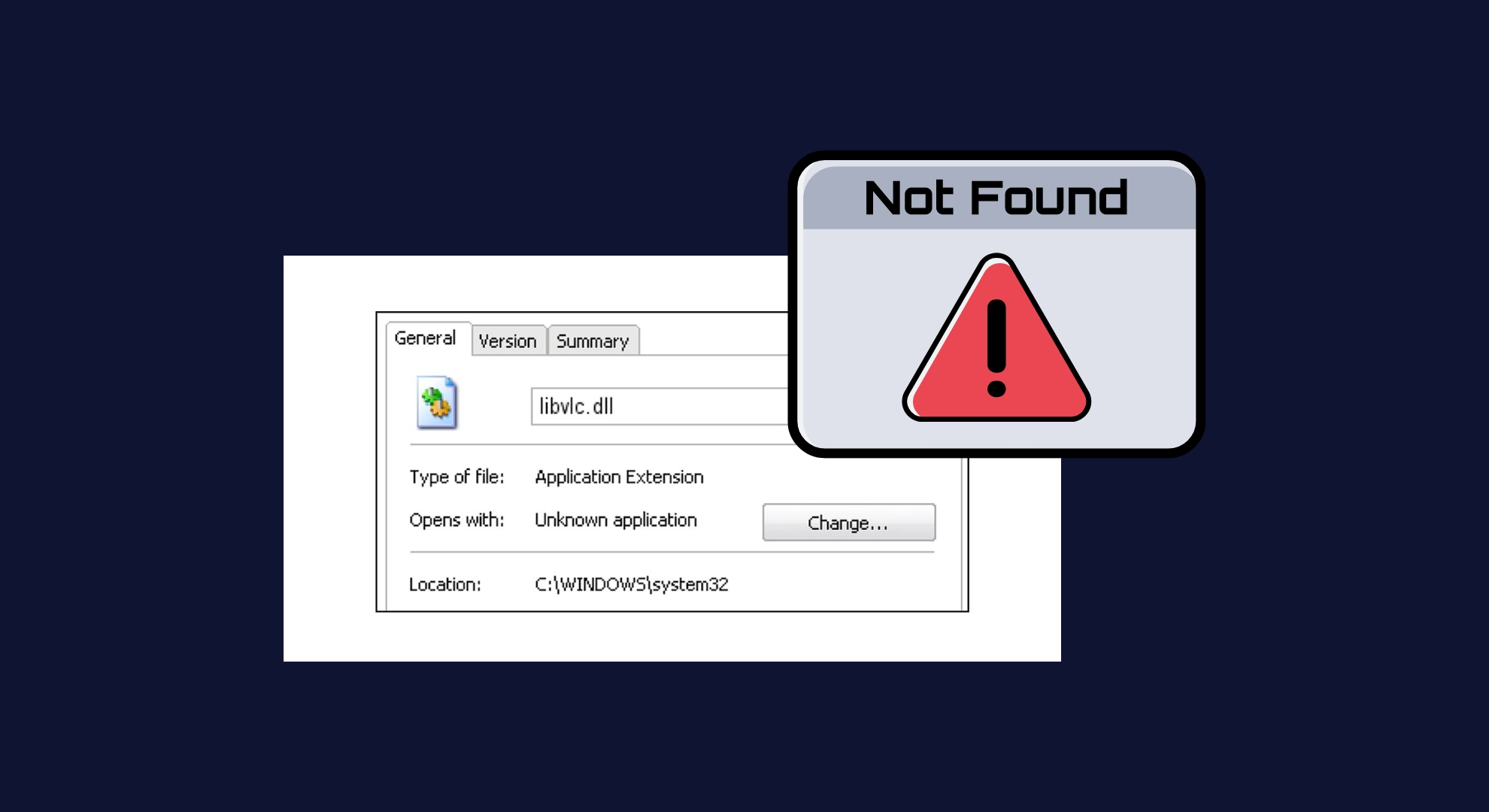
The “libvlc.dll not found” error often happens for several reasons. Here’s a breakdown of the most common causes:
- Corrupted or incomplete installation: Sometimes, the VLC media player doesn’t install correctly. This can mean some files are missing or damaged.
- Malware or virus infection: Harmful programs can delete or damage the DLL file, which leads to the error.
- Outdated or missing system drivers: For VLC to work properly, it needs the latest system drivers. If they’re outdated or missing, there could be problems.
- Compatibility issues: VLC might not work right if it doesn’t get along with other software on your computer.
- Hardware failure or malfunction: Problems with your computer’s hardware can stop VLC from finding the necessary files.
- User error: If someone accidentally deletes the DLL file, that will cause this error message.
READ MORE: How to Downgrade to a Previous Version of VLC Player ➜
Common LibVLC.dll error messages
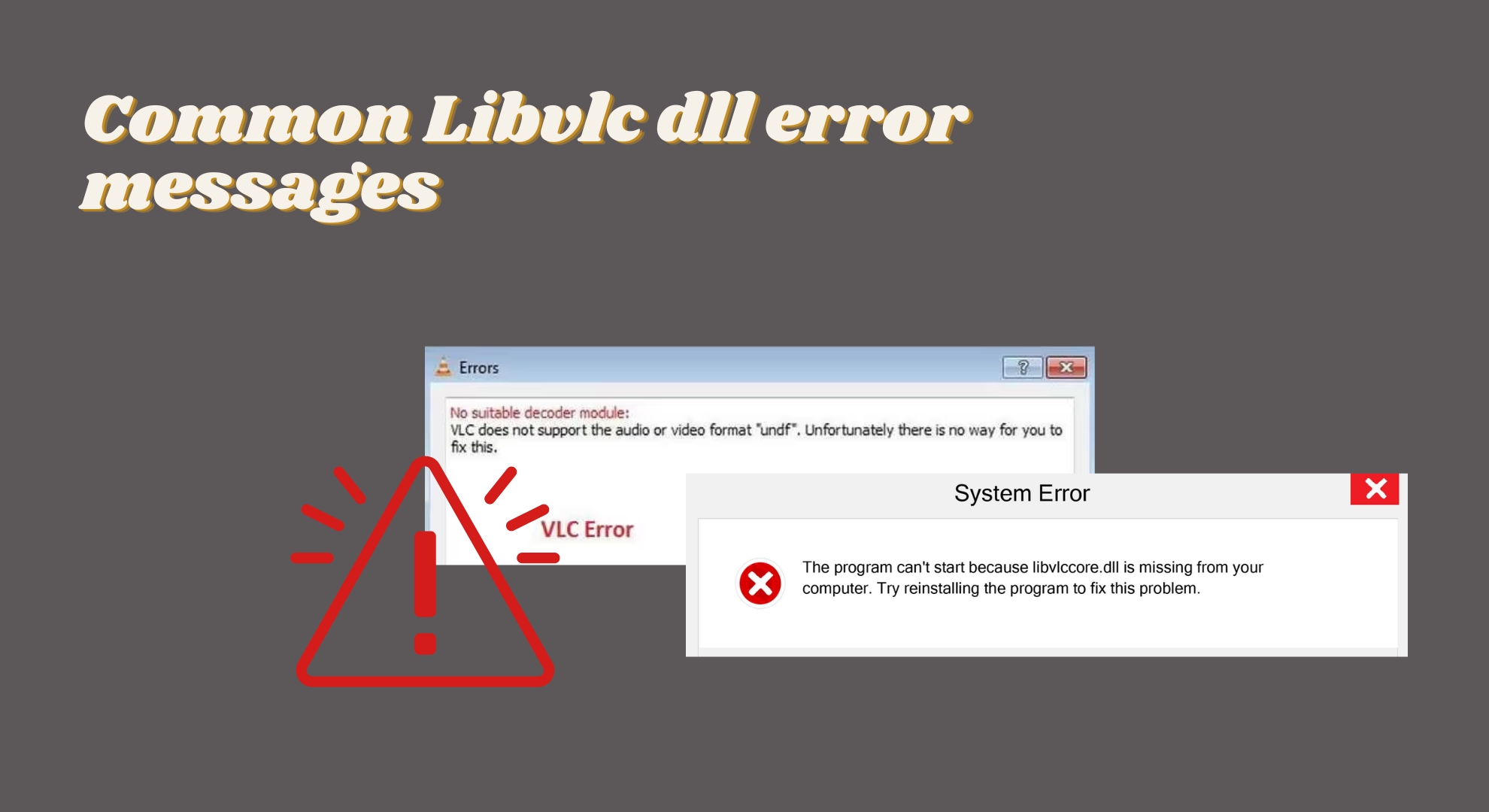
When using VLC for Windows, you might run into these common error messages related to libvlc.dll:
- “libvlc.dll is missing.”
- “libvlc.dll not found.”
- “Error accessing libvlc.dll.”
- “Can’t register libvlc.dll.”
- “Can’t locate C:\Windows\System32\libvlc.dll.”
- “VLC for Windows won’t start because libvlc.dll is missing. Try installing VLC for Windows again.
- “The application didn’t start because libvlc.dll was not found. Reinstalling the application might solve this issue.”
These errors can pop up when installing a program, while a program that needs libvlc.dll is running, when Windows is starting up or shutting down, or even when installing the Windows operating system itself.
READ MORE: How To Fix VLC Shortcuts or Hotkeys not Working Problem? ➜
Is libVLC.dll a virus?

No libvlc.dll is not a virus. This file, libvlc.dll, has been checked with different antivirus programs, and all of them have confirmed that it doesn’t contain any viruses. It’s good news because files that don’t have any virus threats are safer for your computer’s health and performance.
Maintaining a good condition for your computer comes from careful management and taking steps to protect it before problems arise. Regularly update your security tools and scan files to ensure your computer stays secure and performs well.
READ MORE: How to Extract The Audio From Any Video – Guide For All Devices ➜
Fix VLC error libvlc.dll error
If you get a “libvlc.dll is missing” message, there are two ways to fix it: by yourself (manual) or automatically.
For the manual way, you need to download the libvlc.dll file and place it in the folder where your game or application is installed. The automatic method is simpler and takes less work because it fixes the error for you with just a few clicks.
1. Ignore the libVLC error – the best solution
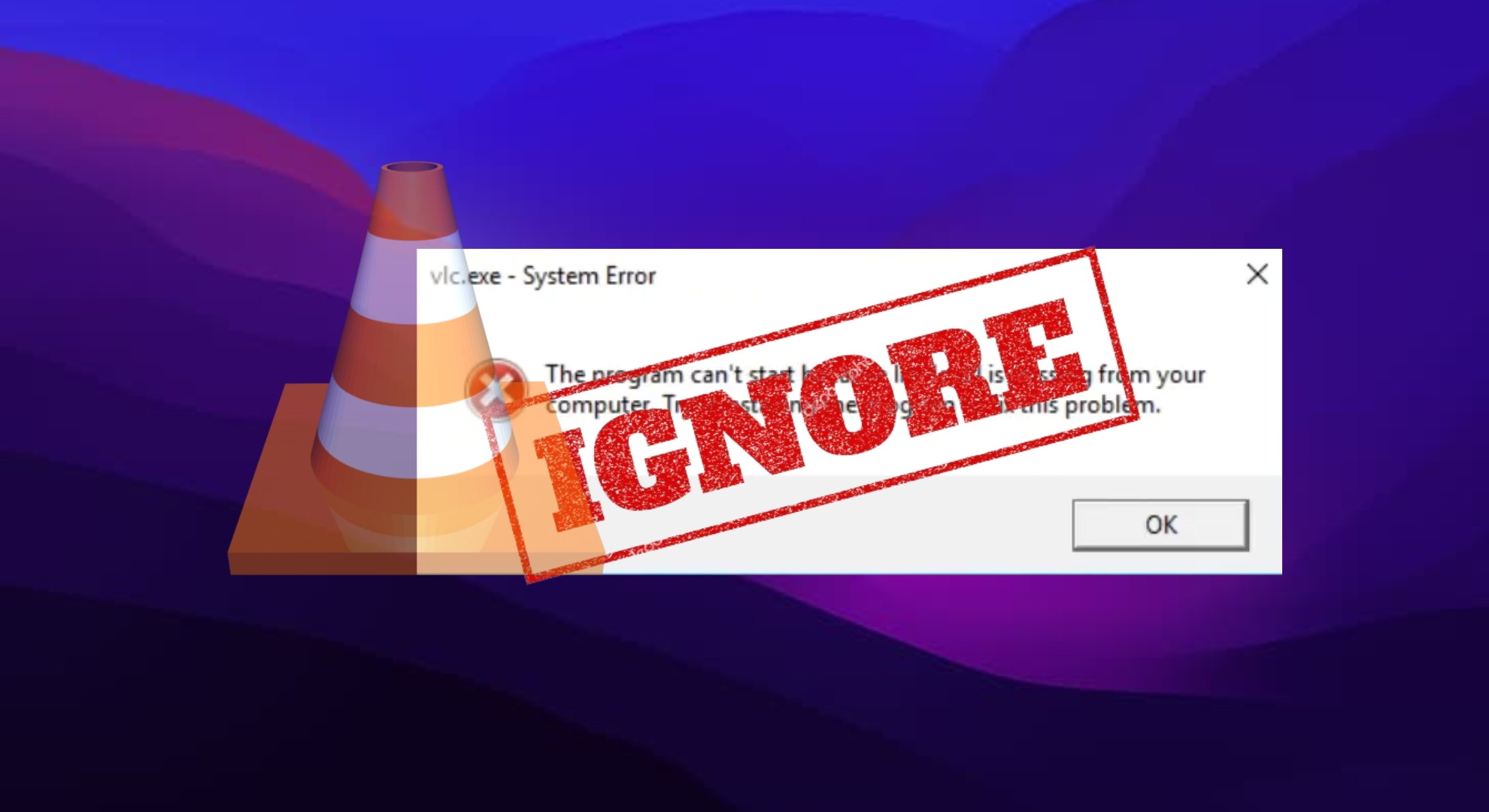
Seeing a “libvlc.dll error” message while using a VLC media player might initially worry you, but sometimes the easiest and smartest thing to do is nothing. Ignoring the error can work out well, and here’s why:
- Temporary glitches: Often, this error is just a short-term issue. Simply restarting VLC or your computer can fix these small bugs without doing anything else.
- Non-critical nature: Even with the error popping up, VLC might work fine. This suggests the error isn’t serious and doesn’t affect how the media player works.
- Risk of complications: Trying to fix the error with complicated steps can lead to more trouble, especially if you’re unfamiliar with how the software works. Staying away from these complex fixes can save you from accidentally causing more issues.
2. Uninstall and reinstall the VLC player
The libvlc.dll file isn’t one you can just add through Command Prompt because you can’t register it that way. While you could get this DLL file from websites other than VLC’s, it’s hard to be sure those files are safe. The best approach is to uninstall VLC and then reinstall.
- Go to your computer’s Settings and click on “Apps.”

Click Apps - Scroll down the list until you find VLC player.

Find VLC from the list - Right-click and choose the “Uninstall” option. This will remove VLC player.

Click on Uninstall - Restart your computer, then download the player from VLC’s official website.

Download VLC
Once it is downloaded, open it and follow the steps to install VLC player on your computer again. Open the VLC player now. It should work without showing the error.
READ MORE: How to Uninstall and Reinstall Valorant on Your PC ➜
3. Update your audio drivers
For VLC Media Player to work properly, it needs access to certain files. If your computer’s audio drivers are old or missing, you might have sound problems or other issues with VLC. Here’s how you can update your audio drivers:
- Go to Settings, then find and click on “Update & Security.”

Click on Update & Security - Select “Windows Update.”

Select Windows Update - Choose “Check for updates.”

Click on Check for Updates - If there are updates for your audio drivers, install them.

Update the audio drivers
After installing, restart your computer. Once your computer is back on, open VLC to check if the error has been fixed. You can also update your drivers from the Device Manager. Here’s how to do it:
- Access the Device Manager from the start menu.
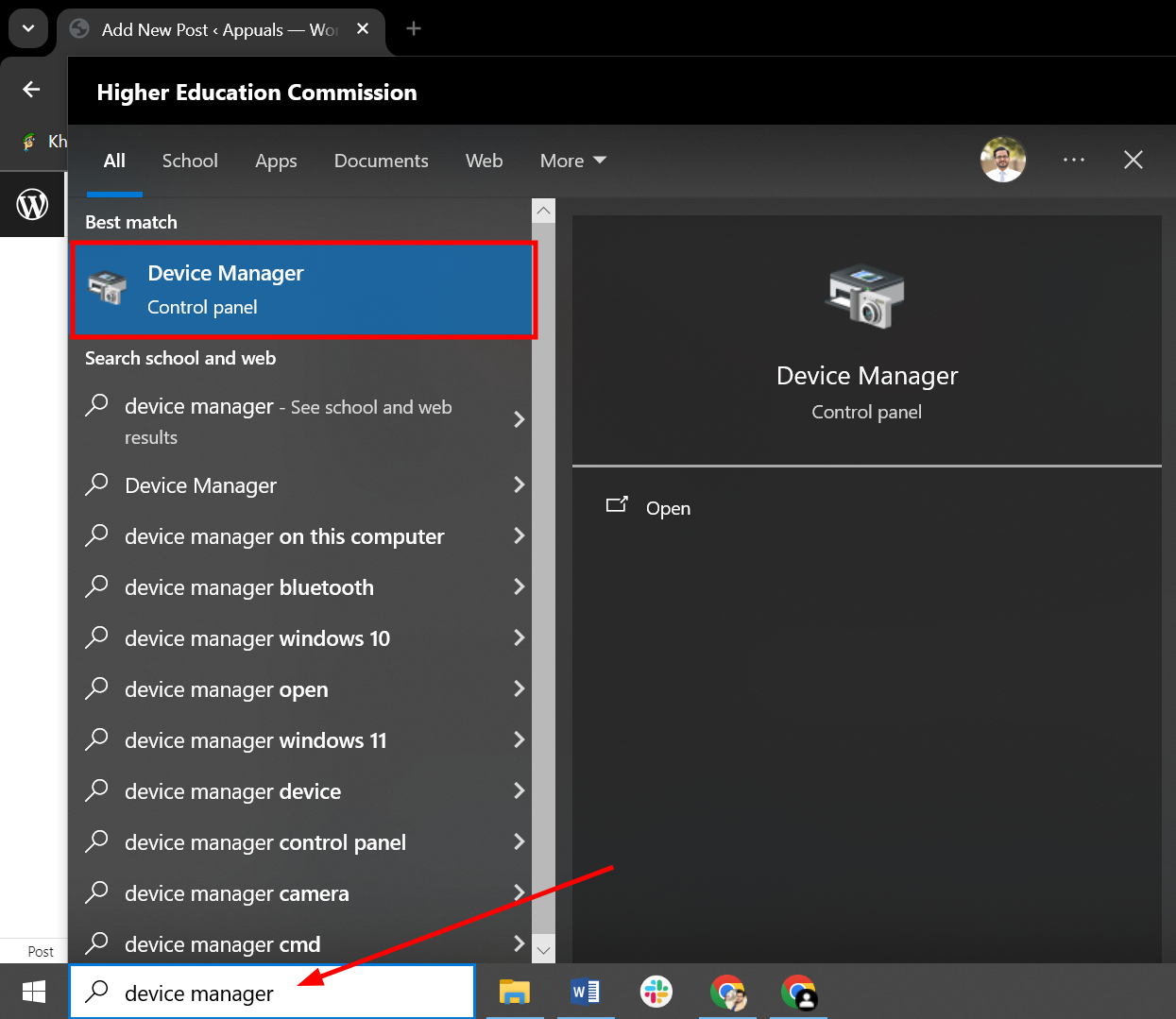
Open the Device Manager - Click on drop down arrow before “Audio inputs and outputs” and select your audio driver.
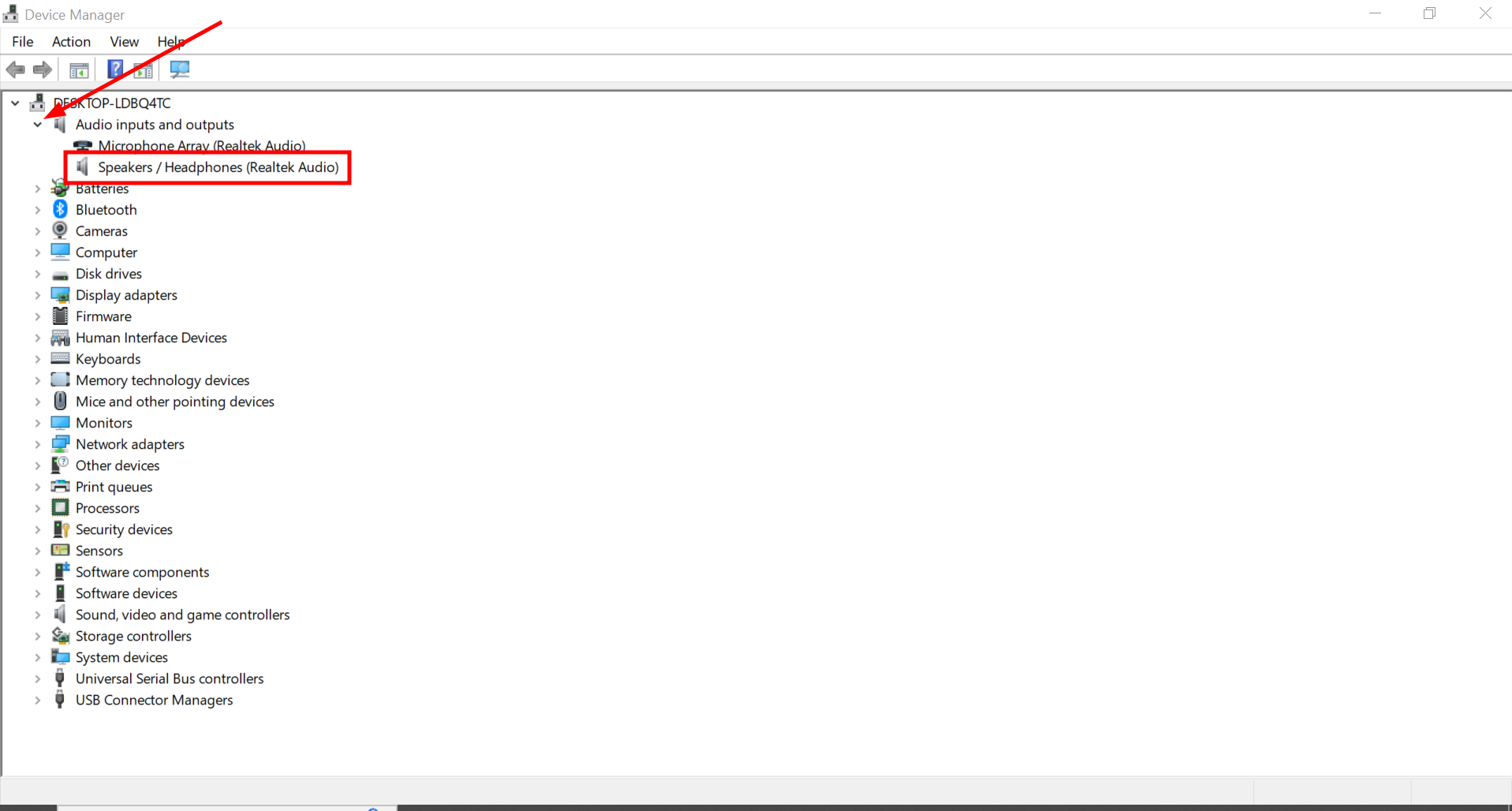
Select your audio driver. - Right click on the audio driver and click on “Update Driver.”
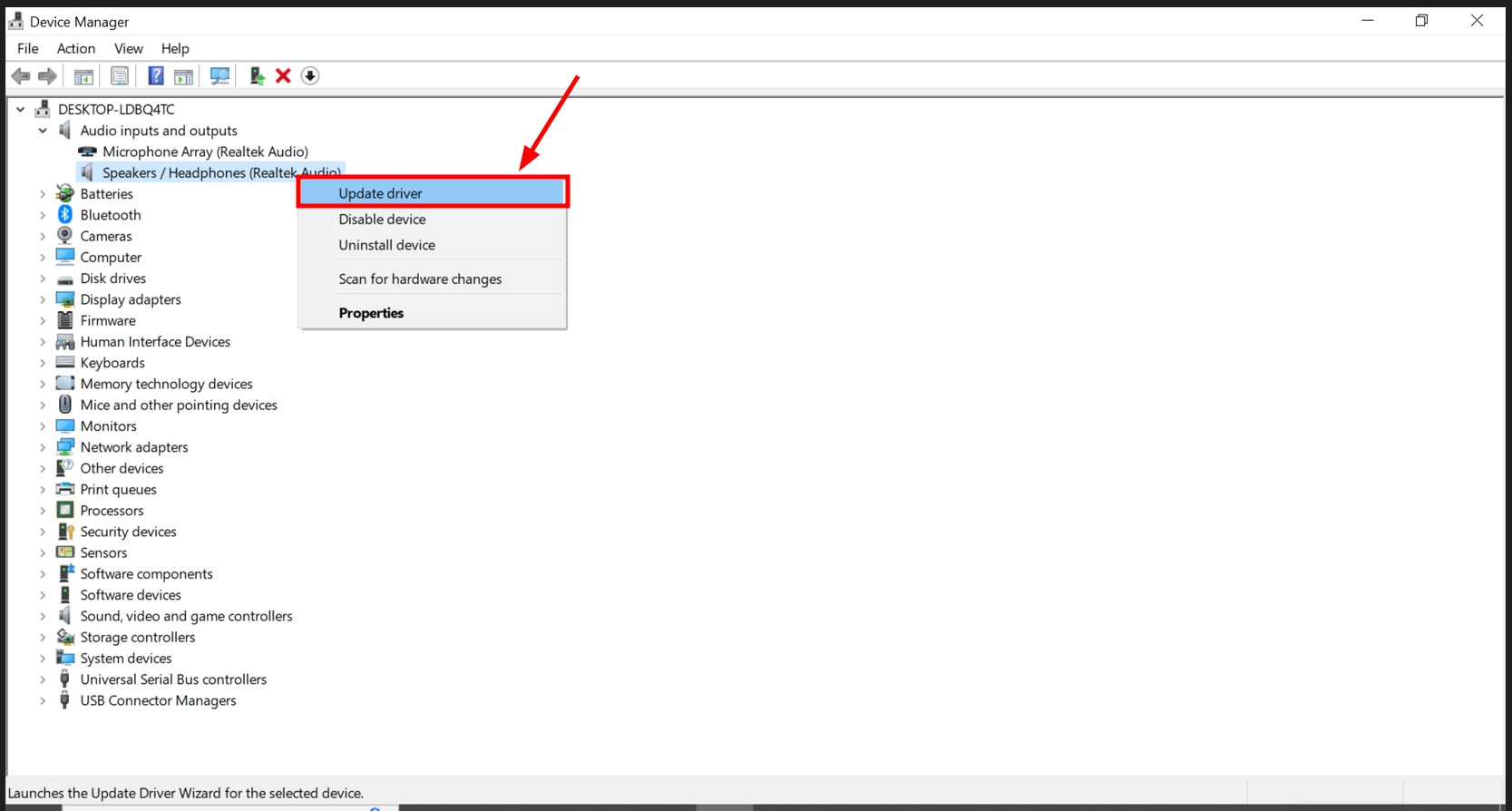
Click on Update driver - Click on “Search automatically for drivers” to let Windows find the drivers.

Click on Search automatically for drivers - If there’s update available, install the drivers with on screen instructions.
READ MORE: How to update graphics driver in Windows? (AMD, Nvidia, Intel) ➜
4. Disable third-party antivirus software

Sometimes, the antivirus program on your computer might block VLC from installing and working correctly, leading to errors. A good step is to turn off your antivirus before installing VLC to see if it makes a difference.
Don’t forget to turn your antivirus back on after VLC is installed. To turn off your antivirus software, follow the guidelines from the company that developed your antivirus program.
5. Fix libvlc.dll missing error with System File Checker (SFC)
The “sfc /scannow” command is a tool that checks and repairs important Windows system files. To use this tool, you must open the command prompt with administrator rights.
- To open the command prompt as an administrator, press the “Win key” on your keyboard, type “Command Prompt,” right click on it, and choose “Run as administrator.”

Run the Command Prompt as an administrator - Once the command prompt opens, type in “sfc /scannow” and press “Enter.

Type sfc /scannow - This will start a system scan, which might take some time, so you must wait patiently.

Scan will start - After the scan finishes, you’ll see a message saying either “Windows Resource Protection found corrupt files and successfully repaired them,” “Windows Resource Protection found corrupt files but was unable to fix some of them,” or “Windows Resource Protection did not find any integrity violations.

System will repair the damaged files
Most of the time, this resolves issues like these and can repair or delete corrupted files.
6. Run the System Restore
System Restore can be a great tool if you’re looking to fix a libvlc.dll error. It allows you to return your computer to a time before the libvlc.dll file was damaged, undoing any changes that might have caused the error. Here’s how to use System Restore to solve the libvlc.dll error:
- Press the “Win + R” keys to open the “Run dialog” box. Type in “rstrui” and click OK to launch the system recovery utility.

Type in “rstrui” and click OK - In the System Restore window, you might see an option to “Choose a different restore point.” If this is available, select it and click Next. Check the “Show more restore points” box to view all available dates.

Check the Show more restore points box - Choose a date that will take Windows back to a point before the libvlc.dll error started showing. It’s important to pick a restore point from a time when you know everything was working fine.

Choose the date you want to restore system to - After selecting a date, click “Next.”

Click Next
It might take a few minutes. After the system restore is done, click Finish to complete the restoration. This process will return your system to an earlier state.
READ MORE: How to Configure System Restore In Windows 10 ➜
Final Thoughts
Tackling the “libvlc errors doesn’t have to be a headache. Whether you reinstall VLC, update your audio drivers, turn off third-party antivirus software, run the sfc /scannow command, or use system restore, each method solves the issue.
We’ve explored simple yet effective steps to ensure your VLC media player runs smoothly, emphasizing the importance of keeping your system up-to-date and secure. The solution might be as straightforward as ignoring the error for temporary glitches or as comprehensive as restoring your system to a previous state.
FAQs
Switching to a different media player can bypass the libvlc.dll error, as the error is specific to VLC media player. However, this doesn’t resolve the underlying issue if you prefer VLC’s features. It’s best to attempt fixing the error using the methods provided in our guide.
To prevent future libvlc.dll errors, regularly update your VLC media player and your operating system. Ensure that your antivirus software is up-to-date and perform regular system scans. Avoid downloading DLL files from untrusted sources.
Yes, reinstalling Windows can fix the libvlc.dll error, but it should be considered a last resort due to the data loss it can cause. Try other troubleshooting methods first, such as those outlined in this blog post.
If none of the suggested fixes resolve the libvlc.dll error, consider seeking help from the VLC support forum or a professional IT technician. There may be a deeper issue with your system that requires expert analysis.
 Reviewed by
Reviewed by 




